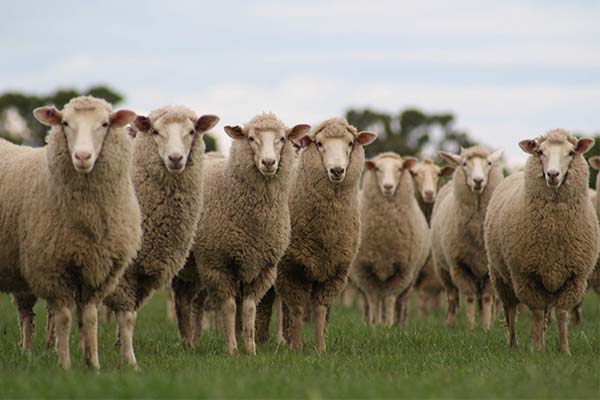Typically, in Australia, in terms of pasture feed on offer, it’s a case of a Tale of Two Cities says Rob Inglis, Elders Livestock Production Manager. Those lucky enough to have had an autumn break are in clover (literally and metaphorically), and those who haven’t are kicking into the wind.

Whether we are talking about sheep or cattle, the principals are the same. Energy requirements and demands increase exponentially from the start of the last trimester of pregnancy until peak lactation, which occurs 3 to 6 weeks post calving or lambing.
For ewes with multiple lambs at foot the increase in energy demand is exacerbated by foetal demand and constriction of the rumen. Where pregnant cows and single bearing ewes, in the appropriate pre-natal condition, can manage on a relatively low-quality diet, multiple bearing ewes require high quality, energy dense feed. For example, i.e. cereal grain or very high-quality pasture.
Condition score at calving or lambing is of great importance
Most modern ewes have a standard reference weight exceeding 60 kg, meaning the above energy requirements are 20 per cent higher, i.e. 30MJ at peak lactation. A ewe cannot consume 30MJ of energy per day so she will have to milk off her back. If there is no buffering – condition score above 3 – lamb growth rates and ewe recovery will be compromised. The same principal applies to cattle.
The table below shows the effect of the combination of condition score and nutrition. Cows on poor nutrition and in low condition score are very likely to not return to oestrus in sufficient time to get in calf within 12 months. With 282 days of pregnancy, there are only 83 days in which to get a cow back in calf.
| Feed availability | Condition score at calving | |||
| 1.5 - 2.0 | 2,5 - 3.0 | 3.5 - 4.0 | ||
| Days to return to first cycle post calving | High feed | 49 | 38 | 21 |
| Low feed | 100 | 75 | 48 | |
| Pregnancy rate (%) | High feed | 84 | 92 | 94 |
| Low feed | 70 | 87 | 86 | |
What is regarded as adequate peri-natal nutrition?
The specific nutrition requirements will depend on a number of factors, so the best advice would be to speak to a qualified Elders livestock production specialist. We can, however, summarise the basic needs:
Multiple lamb bearing ewes:
- Very high-quality pasture (dry matter (DM) digestibility greater than 75 per cent) with feed on offer of at least 2000 kg DM per ha, or:
- Cereal grain (barley, wheat or corn) and high-quality hay pre-lambing and cereal grain and a pulse grain or meal plus good quality hay during lactation.
Single bearing ewes or cows:
- Medium to quality pasture with feed on offer of 1000 kg DM per ha for sheep and 2000 kg DM/ha for cattle, or:
- Cereal or grass hay of 60 to 65 per cent dry matter digestibility.
It is as important not to overfeed as not to underfeed single bearing ewes and cows. Consultation with an accredited Elders livestock production specialist would be prudent.
As always, you should consider and get advice on the appropriate vaccines, drenches and supplements which should be tailored to fit each situation. While 'Vitamin F' (feed) is the foundation of any feeding program, macro and micro-minerals - a complex topic, requiring more detailed attention - (particularly calcium, magnesium and phosphorous) are also necessary for optimum reproductive efficiency.
The Bred Well Fed Well workshops, facilitated by Meat & Livestock Australia, provide an excellent platform to understand feed budgeting and matching breeding and feeding.
Please note: this article contains information of a general nature, and does not take into account your personal objectives, situation or needs. Before acting on any information, you should consider the appropriateness of the information provided, and seek advice on whether it is fit for your circumstances.


